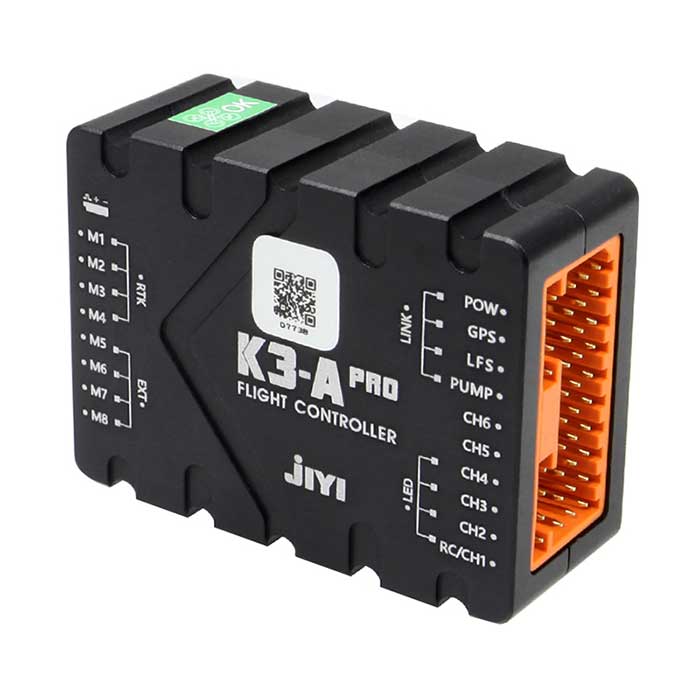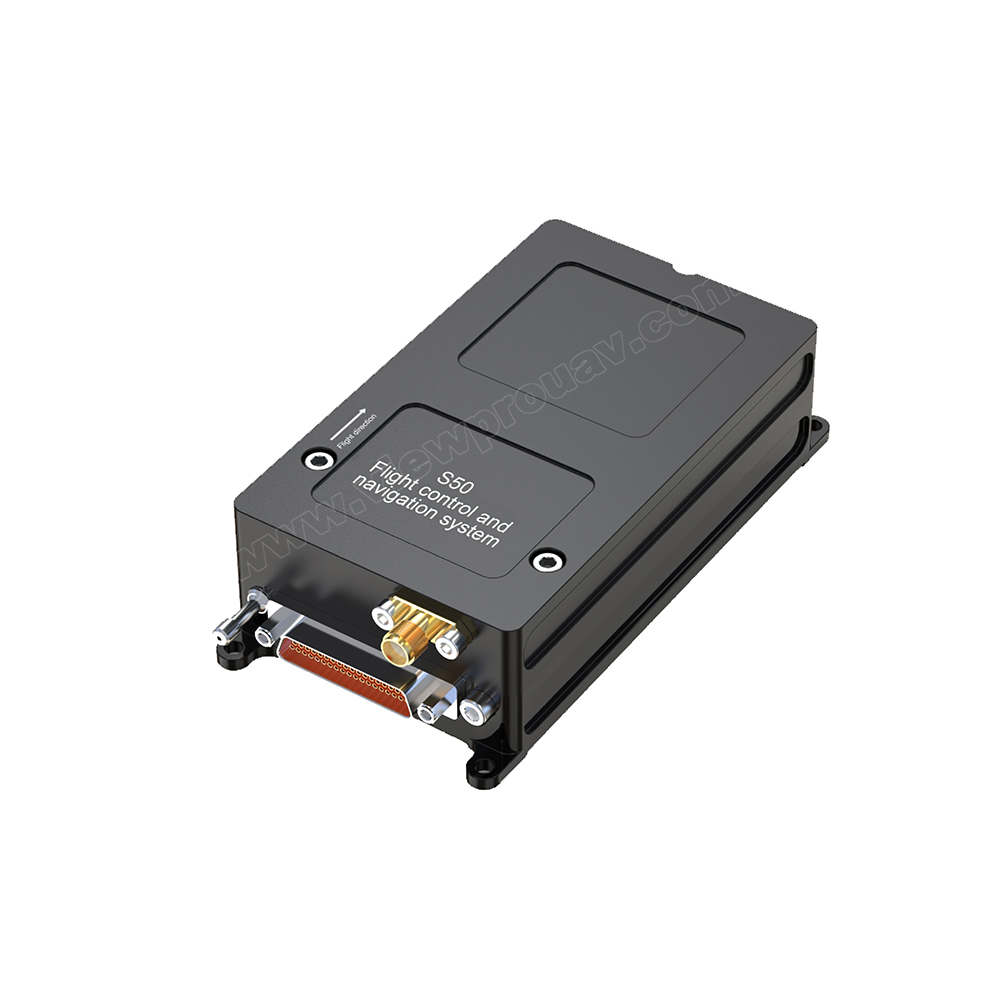SparkNavi Drone Flight Controller and GNSS/INS Made in Taiwan: Leading the Way in Drone Innovation
SparkNavi Drone Flight Controller and GNSS/INS Made in Taiwan: Leading the Way in Drone Innovation
Blog Article
Understanding the Vital Functions and Features of a Drone Trip Controller for Optimum Airborne Efficiency
The flight controller serves as the essential part in a drone's style, coordinating its activities and ensuring security via a sophisticated interaction of sensing units and information handling. Comprehending the necessary functions and features of these controllers is important for optimizing airborne performance, as they dictate not only navigational accuracy yet likewise general security and reliability. With improvements in technology, the landscape of trip controllers is quickly advancing, motivating a better evaluation of what really defines optimum capability in this important system. What ramifications do these developments hold for both enthusiasts and specialists in the field?
Introduction of Flight Controllers
When discovering the world of drone innovation, understanding trip controllers is essential for both enthusiasts and professionals alike. Flight controllers offer as the brain of the drone, managing its activities and guaranteeing security during flight (SparkNavi drone flight controller and GNSS/INS made in taiwan). They refine information from different sensing units, including accelerometers, gyroscopes, and barometers, to maintain balance and respond to pilot inputs properly
The architecture of flight controllers can differ significantly, ranging from fundamental variations designed for entry-level drones to innovative systems geared up with innovative features for expert applications. The integration of GPS abilities makes it possible for specific navigation and positioning, while programmable firmware allows individuals to personalize flight attributes to match their specific needs.
Furthermore, trip controllers are crucial in facilitating communication between the drone and the push-button control, allowing real-time adjustments and telemetry data transmission. Recognizing the various types of flight controllers, consisting of multi-rotor, fixed-wing, and hybrid systems, is important for choosing the proper design for a provided application. Eventually, a detailed understanding of flight controllers not only enhances the flying experience but also takes full advantage of the performance and security of drone operations.
Key Functions of Trip Controllers
Trip controllers play an essential function in handling a drone's flight dynamics by implementing numerous crucial features that guarantee stability and responsiveness. Among the key functions is the stabilization of the drone's orientation and altitude. This is accomplished with the assimilation of different sensing units, consisting of gyroscopes, accelerometers, and measures, which continually keep an eye on the drone's setting and movement.
.png)
An additional necessary function is the handling of control inputs from the pilot or autonomous systems. The flight controller analyzes these inputs and readjusts the drone's electric motor speeds accordingly to accomplish the desired trip path. This consists of managing roll, pitch, and yaw, which are important for maneuverability.
Furthermore, flight controllers are geared up with foolproof mechanisms. These features are made to react to vital circumstances, such as low battery levels or loss of signal, by starting predefined actions like returning to the launch factor or hovering in position.

Necessary Features to Take Into Consideration
When choosing a drone trip controller to ensure ideal efficiency and reliability,Many important features need to be taken into account. One essential facet is the controller's processing power, which determines its capacity to handle complicated trip formulas and real-time data processing. A greater processing capacity enhances responsiveness and security during trip.
Another essential function is the variety of sustained flight modes. A flexible flight controller need to provide numerous modes, consisting of acro, altitude hold, and GPS-assisted modes, satisfying various pilot ability degrees and functional circumstances. Additionally, the pop over to this site visibility of built-in security attributes, such as fail-safes and geofencing, can considerably boost operational safety.
Compatibility with numerous interaction methods is additionally vital, as it ensures seamless integration with other devices and peripherals, such as remote controllers and telemetry systems. The controller's firmware should be easy to use and frequently updated to integrate brand-new attributes and optimizations.
Integration With Sensors and Solutions
A flight controller's efficiency is greatly affected by its capability to integrate with various sensing units and systems. This assimilation is vital as it allows the flight controller to obtain real-time information essential for reliable flight management. Key sensing units include GPS, inertial measurement devices (IMUs), measures, and magnetometers, each providing vital information regarding the drone's orientation, placement, and altitude.

In addition, advanced flight controllers sustain assimilation with haul systems, including electronic use this link cameras and various other sensors, making it possible for boosted capabilities such as independent navigating and challenge evasion. This interconnectedness not just improves the drone's functional capabilities yet also increases its application prospective throughout various sectors, from aerial digital photography to agricultural tracking. Thus, a well-integrated trip controller is basic for accomplishing optimum aerial efficiency and ensuring the dependability of drone operations.
Tips for Optimizing Performance
To take full advantage of the performance of your drone, several vital approaches can be utilized that concentrate on optimizing both equipment and software program elements. First, make certain their explanation that the trip controller firmware is up to day. Suppliers often release updates that boost stability, improve capability, and repair bugs. Consistently looking for these updates can considerably influence your drone's performance.
Next, adjust your sensors, consisting of the accelerometer and gyroscope, to ensure precise analyses. Appropriate calibration decreases drift and improves trip stability, especially throughout complex maneuvers. In addition, consider updating the equipment components, such as props and electric motors, to boost thrust and effectiveness. Top quality props can lower drag and increase flight time.
Additionally, enhance your drone's weight by decreasing unnecessary payloads. A lighter drone not only does much better but additionally prolongs battery life. Ultimately, tweak your trip settings, including PID (Proportional, Important, Acquired) worths, to attain smooth and receptive handling. By applying these approaches, drone drivers can significantly enhance aerial performance, resulting in a more pleasurable and effective flying experience.
Verdict
To conclude, a detailed understanding of drone trip controllers is crucial for enhancing airborne performance. The integration of important attributes and crucial functions, including handling power and security mechanisms, straight influences the security and maneuverability of drones. Efficient communication with numerous sensors and systems plays an important duty in accomplishing exact navigating and functional effectiveness. By focusing on these elements, drivers can considerably raise the efficiency and integrity of their drone systems in diverse applications.
Trip controllers serve as the brain of the drone, coordinating its movements and making sure security during flight.Flight controllers play an essential role in managing a drone's trip dynamics by executing numerous key functions that make sure security and responsiveness. The trip controller interprets these inputs and changes the drone's electric motor rates as necessary to achieve the desired flight course.Many important attributes must be taken into account when selecting a drone flight controller to guarantee ideal efficiency and integrity. Hence, a well-integrated trip controller is basic for attaining optimal airborne performance and making sure the reliability of drone procedures.
Report this page